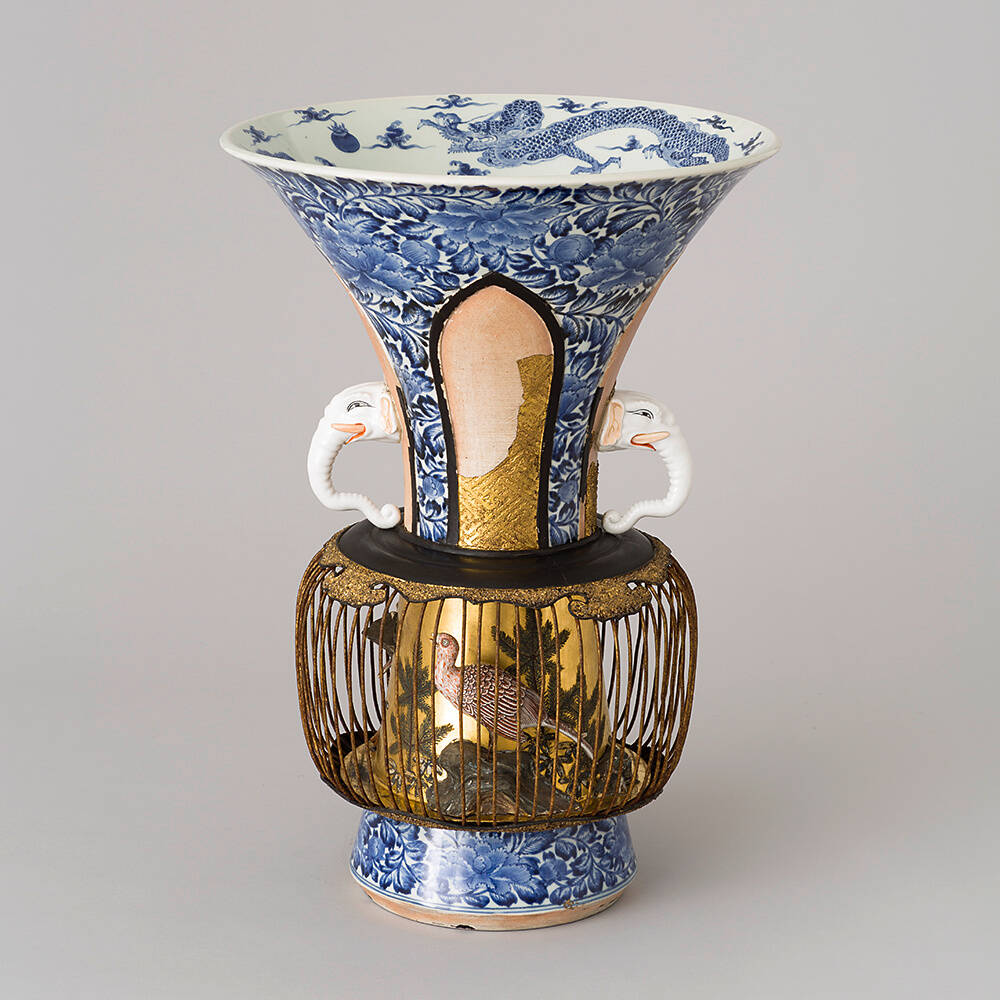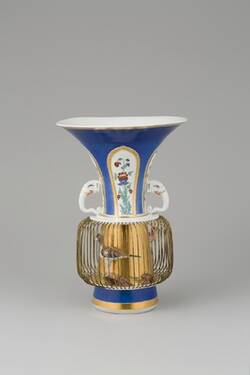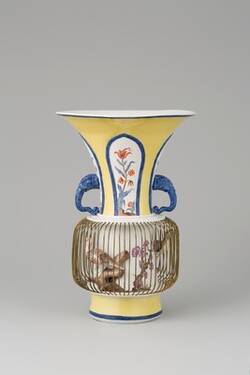Due to its unusual shape and rarity, the bird cage vase is one of the Dresden Porcelain Collection’s best-known pieces. This vase is a remarkable combination of porcelain and lacquer – two materials especially associated with Japanese craftwork.
The vase’s trumpet-shaped body and handles are porcelain, as are the birds behind the bars of the cage. In contrast, the fields in a lancet arch shape above the cage are filled with gilded urushi lacquer.
Further Media




When Augustus the Strong built up his unique porcelain collection, there was only one main importer in Europe – the Dutch East India Company. The Dutch controlled the sea routes to Asia around the Cape of Good Hope. Moreover, from the centre of their Far Eastern trade network in Batavia, today’s Jakarta, they dominated trade in the Asian-Pacific region. The Dutch also had a trading post on Formosa, today’s Taiwan. Formosa was not part of China, but from there the Dutch could trade with China directly.
In the 1630s, the Dutch East India Company – incidentally, the world’s first joint-stock company – began adding porcelain to their trade with China. The pieces were then offered at their twice-yearly auctions in Amsterdam.
But just ten years later, trade with China collapsed as the country sank into decades of civil war over the Ming dynasty succession. In their resulting search for new suppliers, the Dutch East India Company turned to Japan. There, the town of Arita became an important ceramics centre, though smaller than those in China. The Dutch East India Company was the only European trading company allowed to establish a trading post on Dejima, an artificial island in the bay of Nagasaki.
With the civil war in China was finally resolved in the late seventeenth century, the Chinese ‘porcelain capital’ of Jingdezhen restarted production on an even grander scale.
For the Dutch East India Company, though, trading in porcelain was more or less a sideline. It often allowed private individuals to buy porcelain on site for an additional charge, and then transported the goods on the Company’s ships. In The Hague and Amsterdam, a specialised art trade developed with competing suppliers offering exquisite porcelain for sale. Augustus the Strong’s agent, the Italian Count Lagnasco, acquired around 2000 pieces of porcelain directly in Holland – including such outstanding pieces as the ‘bird cage’ vases.
- Location & Dating
- Japan, Hizen Province, Arita, Edo period (1603-1868), c. 1690-1720
- Material & Technique
- Porcelain, metal, wood, paper, painting: underglaze cobalt blue, cold-painting, lacquer and gold
- Dimenions
- H. 52,5 cm, D. 37,0 cm, D. Fuß: 18,0 cm
- Museum
- Porzellansammlung
- Inventory number
- PO 5178